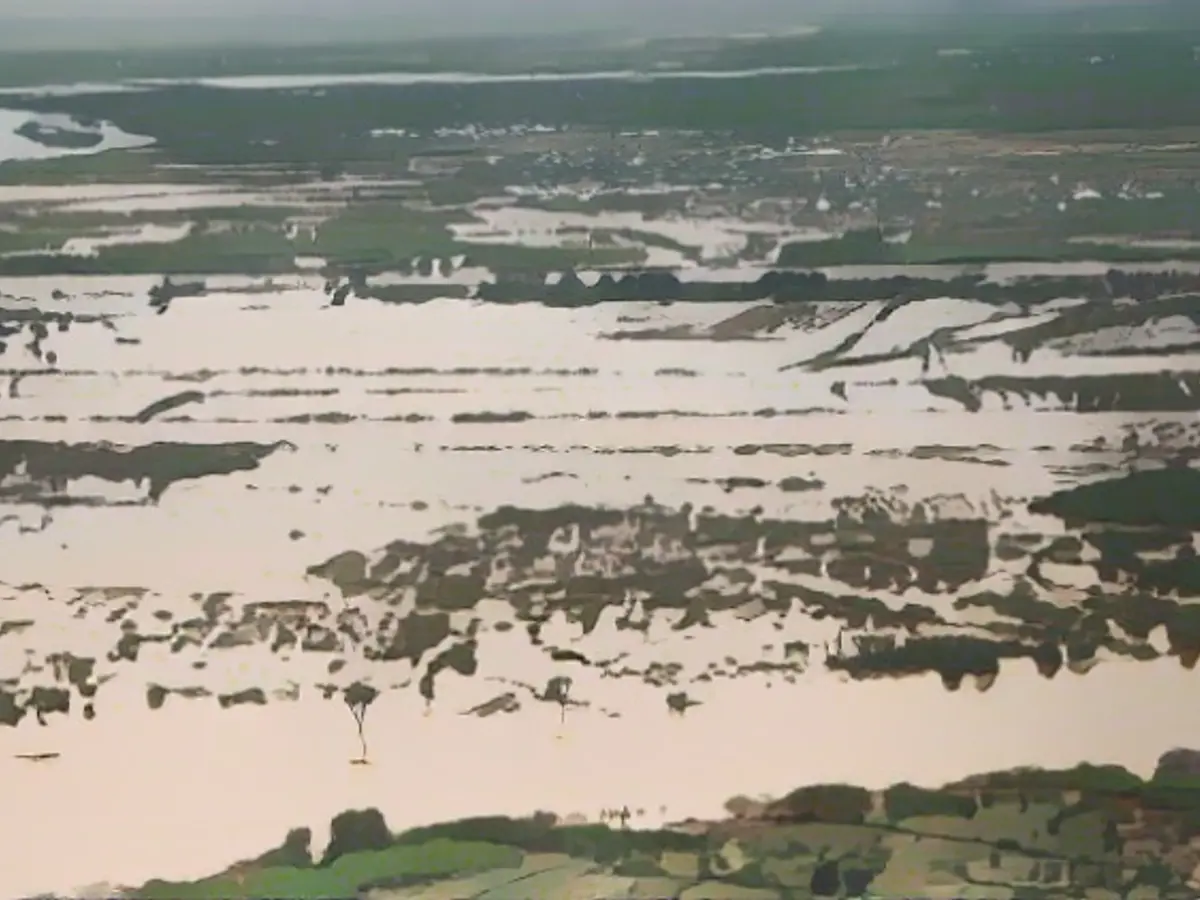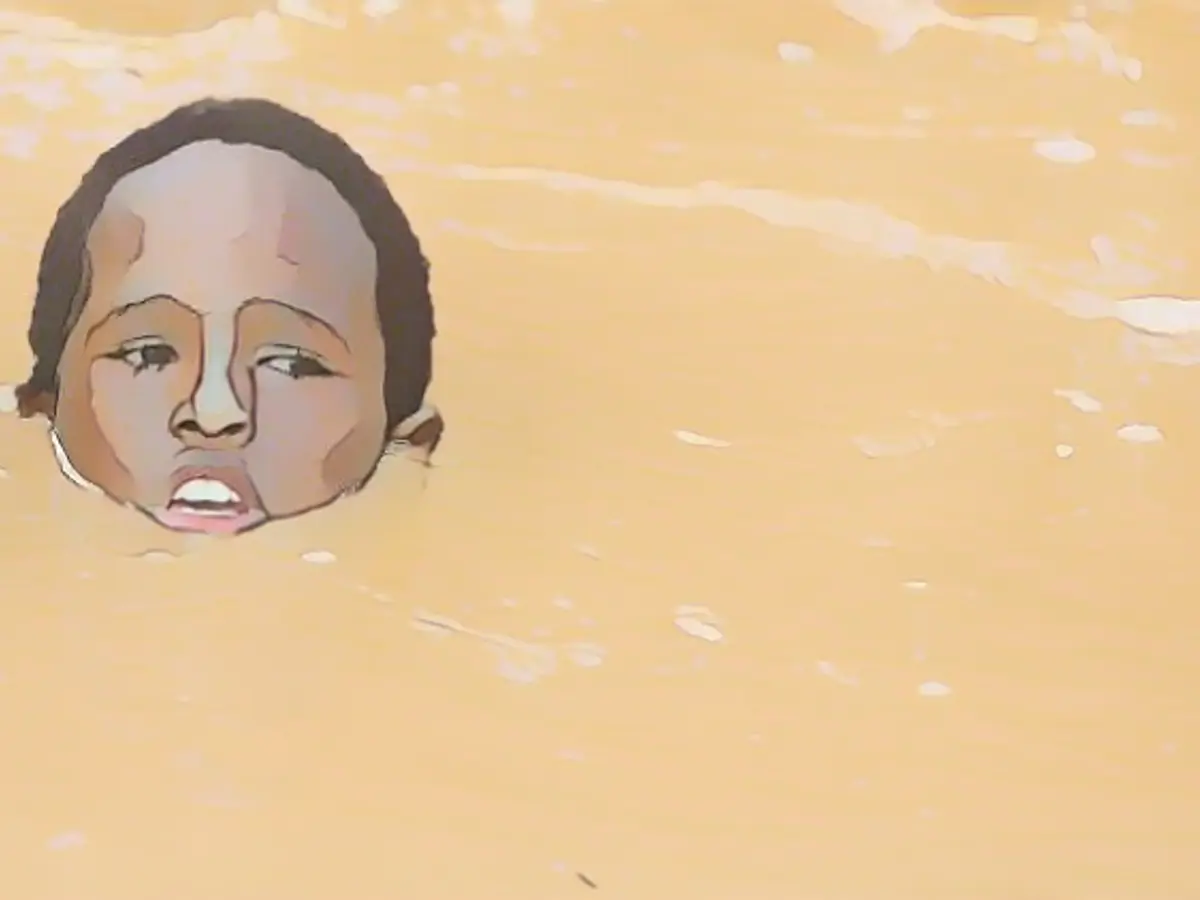Somalia feels the deadly effects of the climate crisis
The extreme drought is now being followed by flooding in Somalia. The United Nations is warning of a flood of the century that could endanger more than 1.6 million people in the country plagued by civil war.
More than 30 people have drowned in Somalia in recent days, according to the authorities in the country, which is plagued by civil war and famine. Since the rainy season began in East Africa in October, numerous rivers in the Horn of Africa have burst their banks, destroying bridges, houses and roads. Around half a million people have had to flee their homes.
Just a year ago, Somalia was still experiencing extreme dryness and drought. At that time, the rainy season had almost completely failed in the fall, and even before that there had been little to no rain during the rainy seasons. More than 43,000 people died as a result of the drought in 2022, half of them children under the age of five. They died mainly as a result of malnutrition and poor water supply.
This year, Somalia is now being hit by flood-like rainfall. These are caused by two weather phenomena in the oceans that can lead to extreme weather along East Africa's coasts. One well-known phenomenon is El Niño, which occurs regularly in the Pacific every few years and causes water temperatures to rise. This then leads to extreme weather phenomena worldwide: warm winters in the north, lower temperatures in the tropics, extreme rainfall.
Extreme weather causes humanitarian catastrophe
This phenomenon is exacerbated in the Horn of Africa by an additional rise in temperature in the Indian Ocean, the so-called "dipole", which is triggered by El Niño. The sea temperature near the coast of the Horn of Africa is significantly higher, while it is below average in the eastern Indian Ocean. This causes extreme weather along the east coast of Africa, particularly in the Horn of Africa, especially in Somalia.

"Extreme weather associated with the ongoing El Niño risks further increasing humanitarian needs in already vulnerable communities in Somalia and many other places," said Martin Griffiths, United Nations Under-Secretary-General for Humanitarian Affairs, in a press release. "We know the risks and must get ahead of these looming crises." The World Meteorological Organization (WMO) announced a few days ago that this phenomenon could continue until spring 2024.
Somalia may therefore only be at the beginning of a long period of extremely heavy rainfall. The UN agencies are currently talking about over 1.5 million hectares of fertile farmland that could be destroyed by flooding. Over the coming months, this would have extreme consequences for the Somali population, who already have almost nothing to live on due to the decades of civil war and the drought of recent years.
Famine almost inevitable
According to the World Food Program (WFP), more than six million people are already affected by the food crisis. That is more than a third of the entire population. More than 40,000 people are suffering from extreme hunger, mainly children. More than 1.8 million children are considered malnourished. WFP warns that these numbers may now rise to extreme levels: "Livelihoods and lives are at risk, with 4.3 million people - a quarter of the population - expected to face famine or worse by the end of this year," said Petroc Wilton, WFP spokesperson for Somalia.
Last week, the United Nations pledged 25 million dollars in aid to mitigate the impact of the floods and provide rapid relief to people in need. But the problem is getting the aid to where it is urgently needed. The masses of water have destroyed roads and bridges where the two major rivers have burst their banks. Numerous families whose huts have been washed away are currently seeking shelter in schools, as these are mostly made of stone.
At least, according to the UN World Food Program (WFP), good weather forecasts made it possible to send warnings in advance to people in the areas affected by the floods, as well as cash so that they could take precautions and have the financial means to flee. "In a country at the forefront of climate change, it is crucial to act before crises occur," said WFP.
- The current floods in Somalia, a result of the ongoing El Niño, are exacerbated by climate change and elevated temperatures in the Indian Ocean, making this a international concern for humanitarian aid organizations.
- Amidst the ongoing drought disasters in Africa, Somalia is now facing Famine almost inevitable due to the flood-like rainfall, which could worsen the food crisis affecting over six million people, with over 40,000 suffering from extreme hunger.
- As a consequence of international climate change challenges, El Niño is causing extreme weather events in Somalia, leading to a flood of the century, drowning over 30 people and exposing 1.6 million people to the risk of humanitarian catastrophe, adding to the suffering of a country already plagued by civil war and famine.
Source: www.ntv.de






